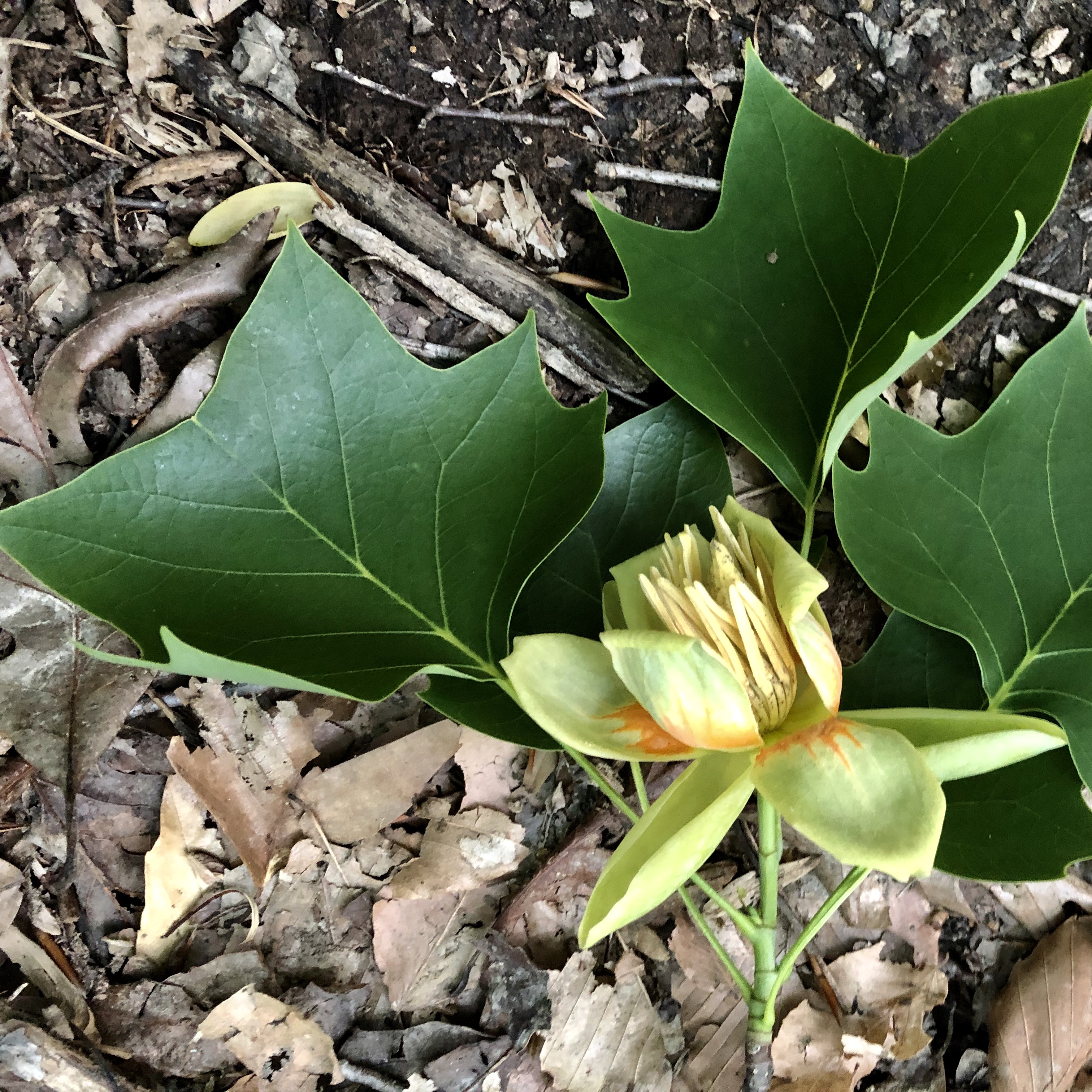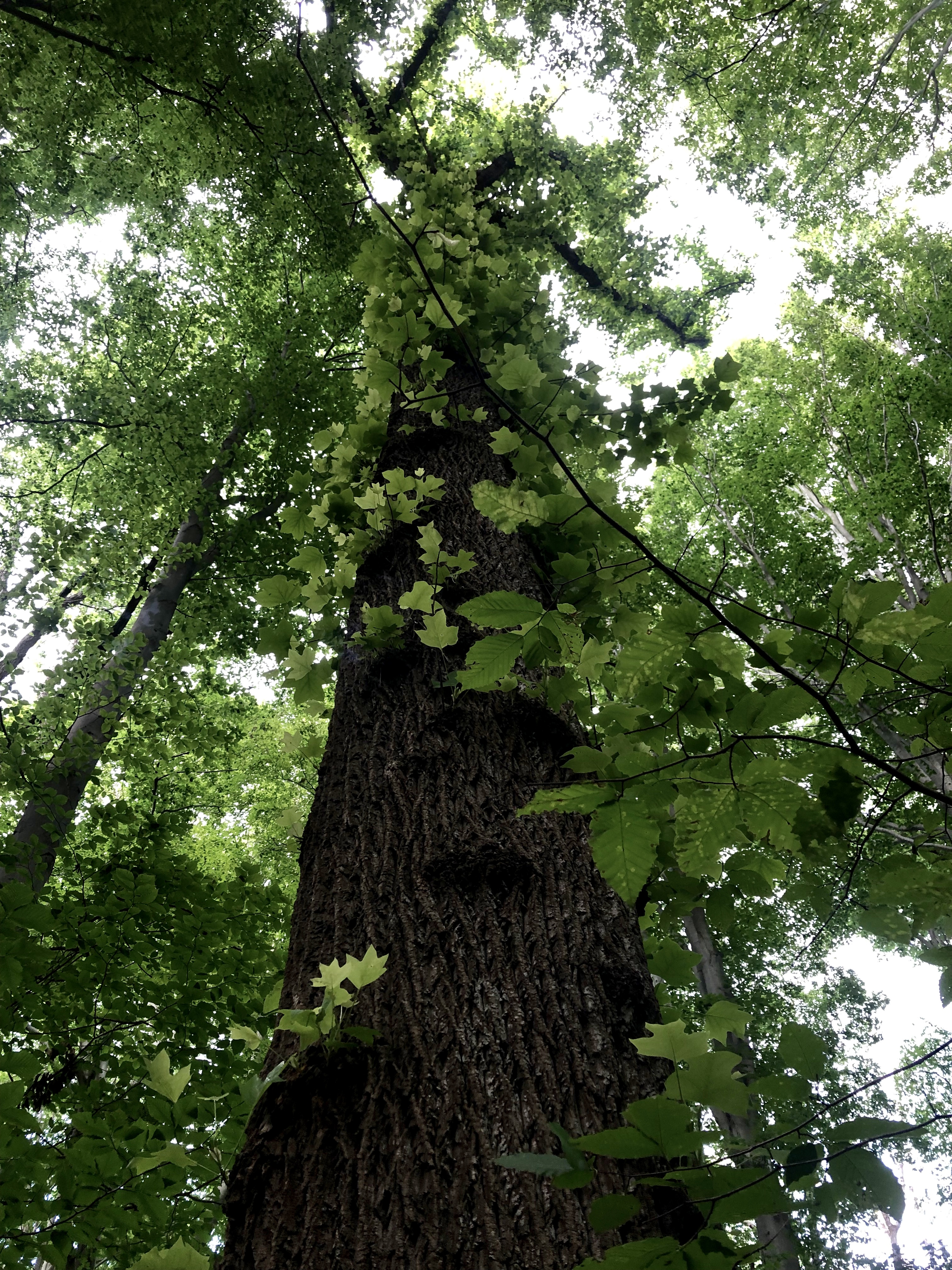Tulip Poplar trees – giants of the forest
For most of the year, you probably wouldn’t even notice a Tulip Poplar – Liriodendron tulipifera tree in the forest. They are tall and plain except in late spring. With all of the spring rain and wind, Tulip Poplar flowers fell and were all over the trails. After doing some research, I realized that Tulip Poplar or Liriodendron tulipifera are an unusual hardwood.
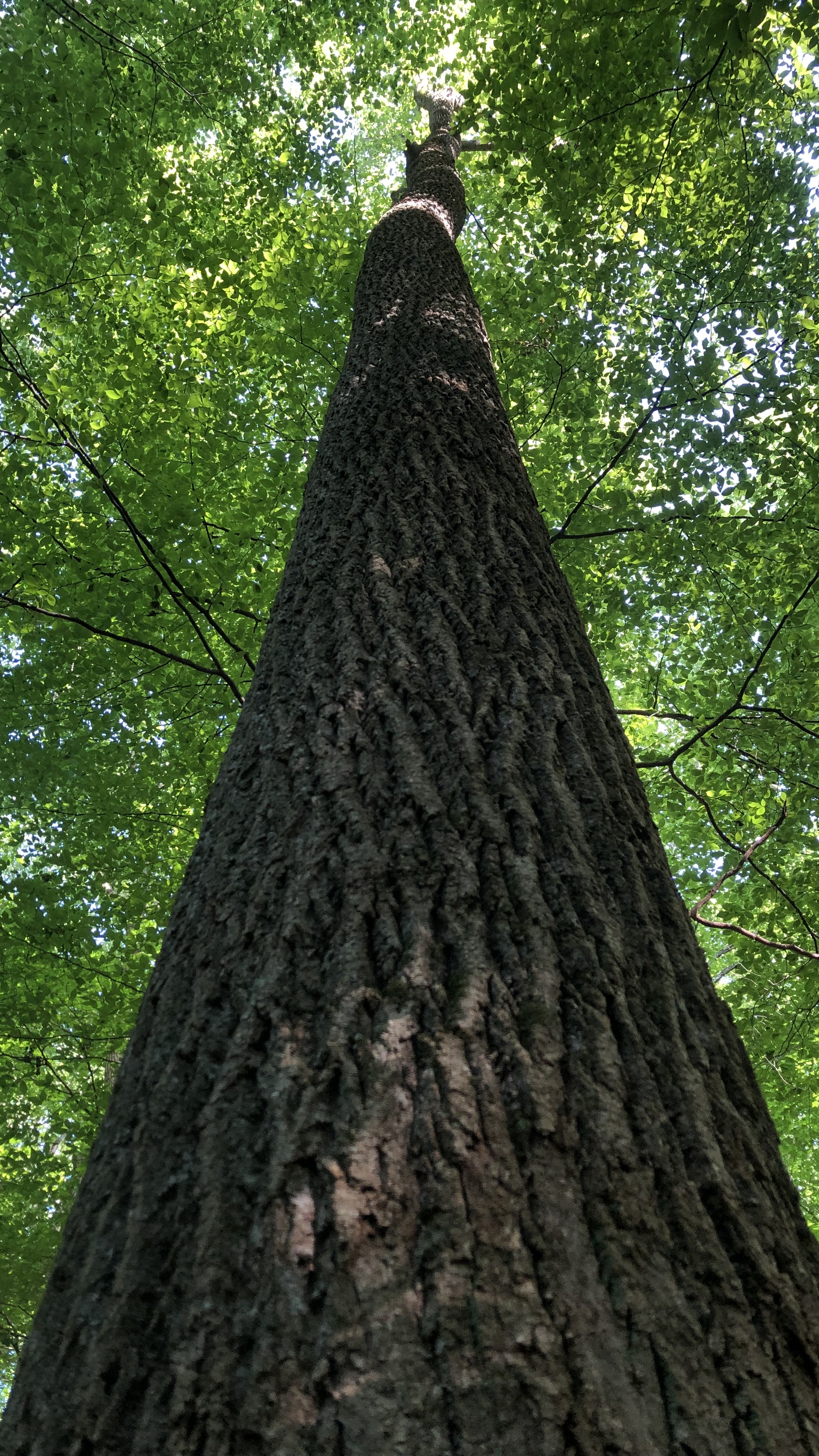
General Information
The Tulip Poplar is a tree common tree to North America, and it is one of the tallest of the native hardwoods. The scientific name is or Liriodendron tulipifera, but most people probably know them as Poplar trees. They are unusual because they are a fast-growing hardwood. As a result, in the right conditions, these forest giants can grow to 150 feet tall. There are records of a Poplar tree growing to almost 200 feet tall. Wild trees usually have long trunks with no branches, and the canopy is at the top of the tree. The trunk is usually very straight, therefore it is great for harvesting.
Scientific Information
Scientific Name: Liriodendron tulipifera
Kingdom: Plantae – Plants
Division: Magnoliophyta – Flowering plants
Class: Magnoliopsida – Dicotyledons
Family: Magnoliaceae – Magnolia family
Genus:Liriodendron
Life Cycle: Perennial
Tulip Poplar flowers
Mature Tulip Poplar trees produce a beautiful flower in May and June. The flower bud resembles a duck bill before the petals start to open. The flowers are a combination of green, yellow, and orange, and the petals resemble tulip petals. Tulip Poplar flowers have about a tablespoon of nectar per bloom, and therefore are popular with bee keepers. Poplar honey has a rich strong flavor.
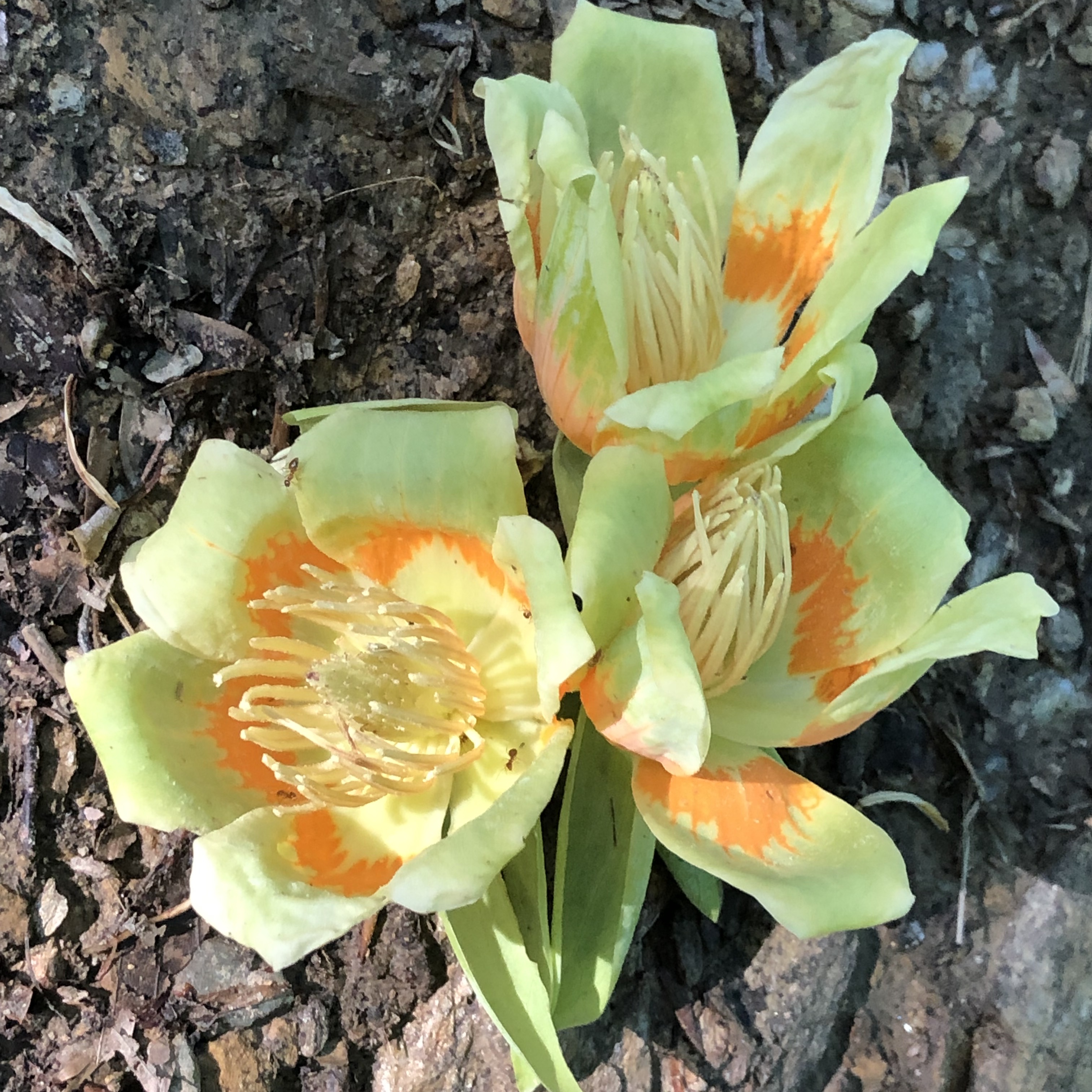
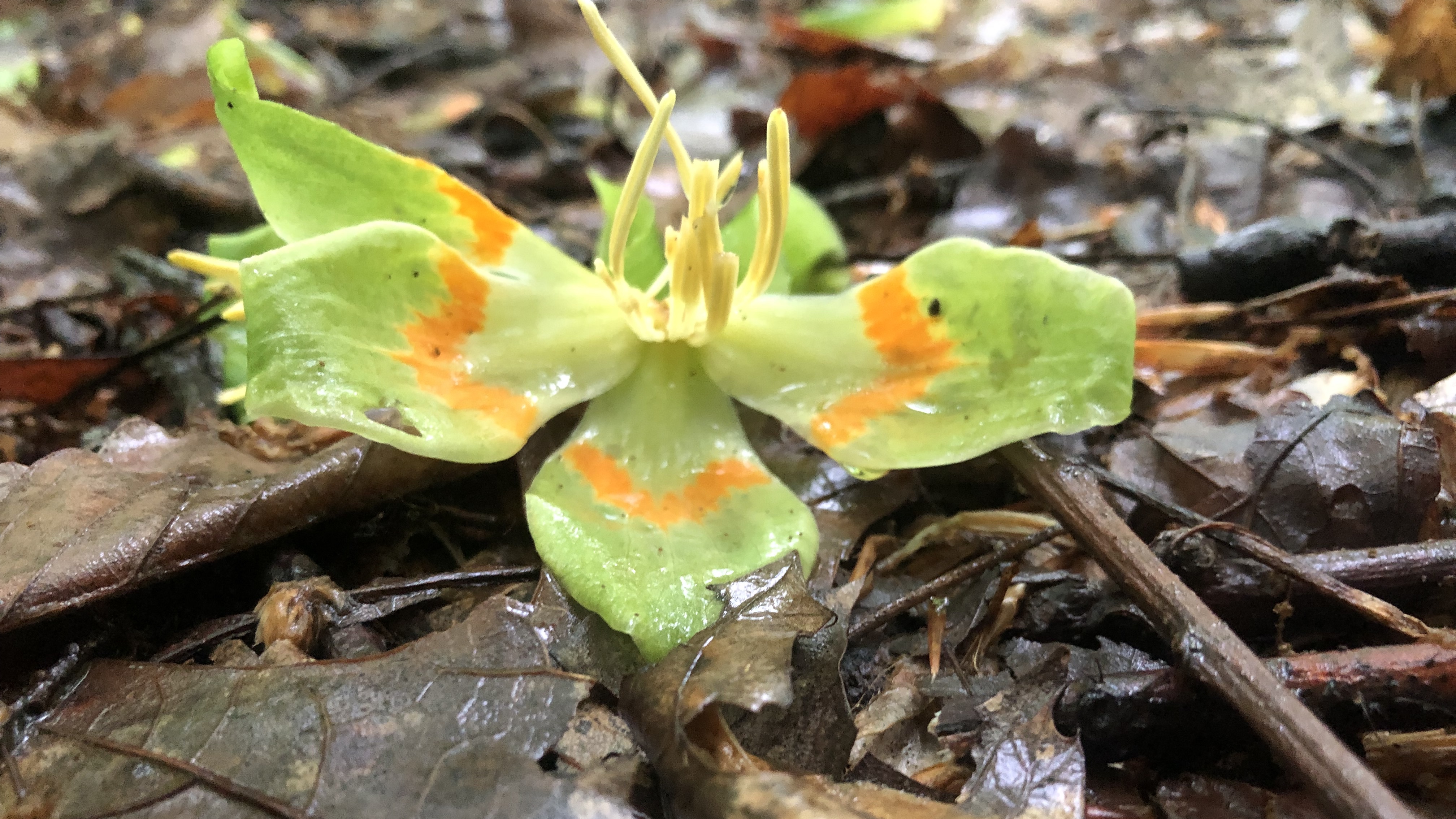
Tulip Poplar leaves
The leaves of the Tulip Poplar tree are fairly easy to distinguish. They have the following characteristics.
- Four prongs
- A central vein
- Lateral veins that are opposite of each other
- Dark green, glossy, smooth on both sides
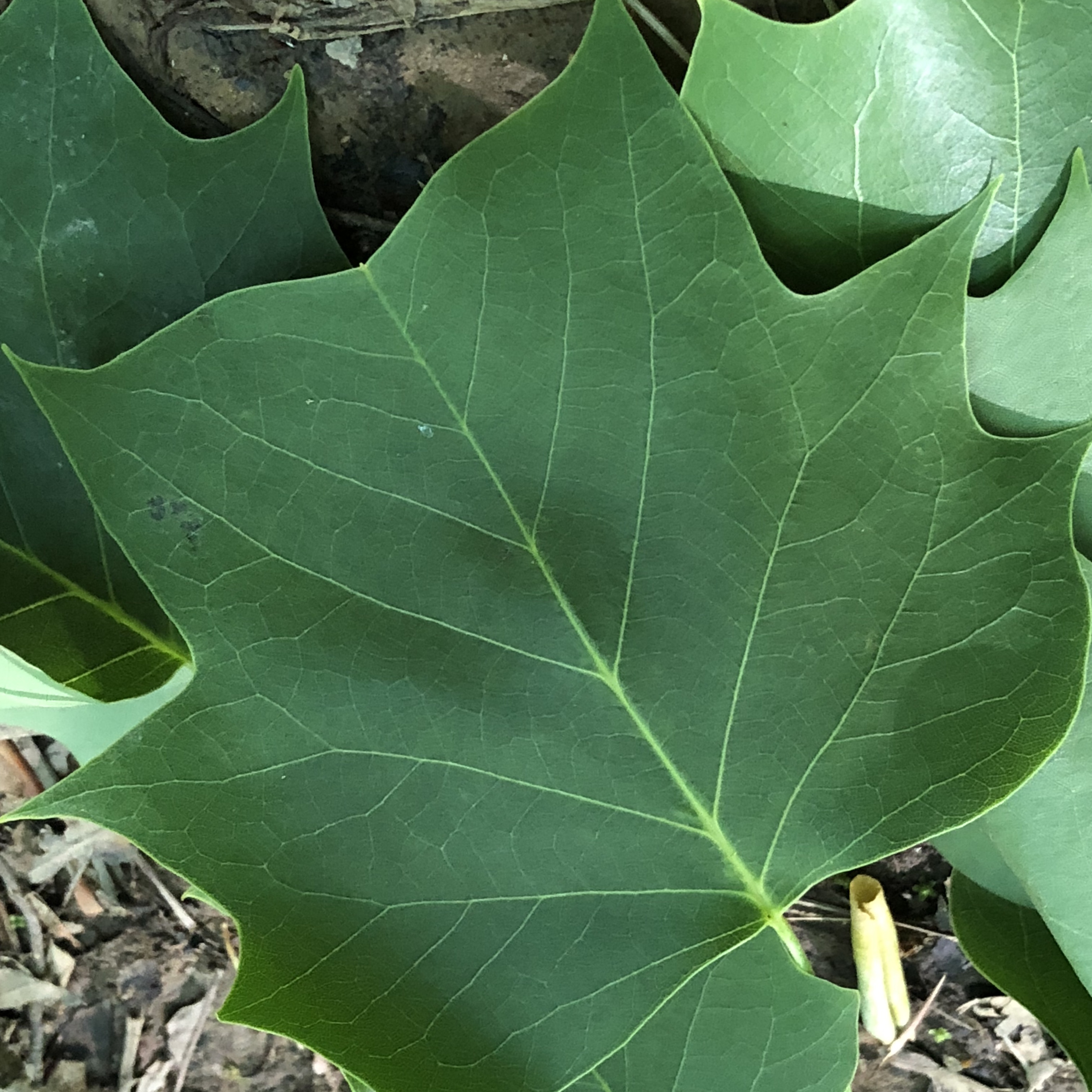
Fall Colors
In the fall, Tulip Poplar leaves turn a a bright yellow. As winter approaches, the yellow fades. and they turn brown and drop off.
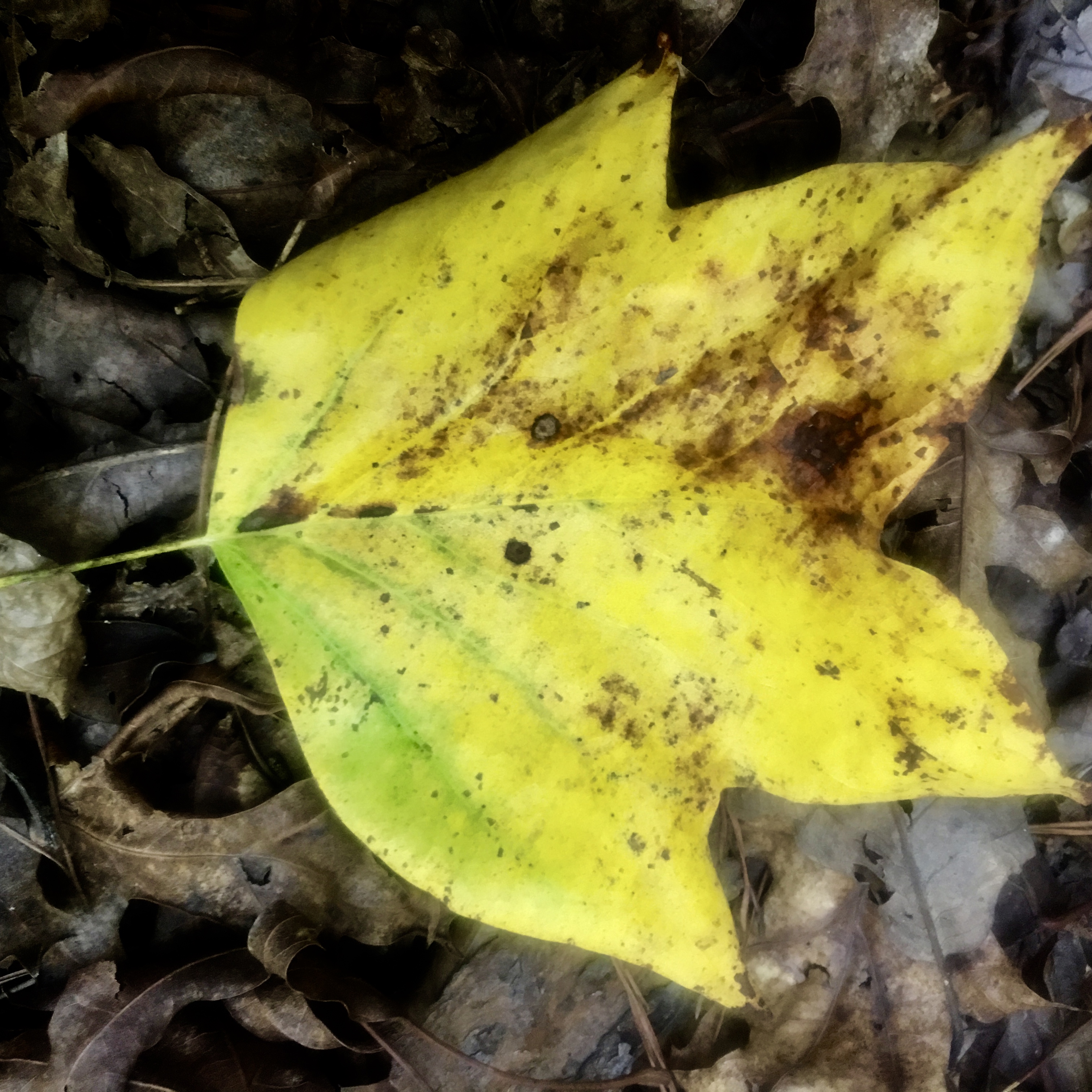
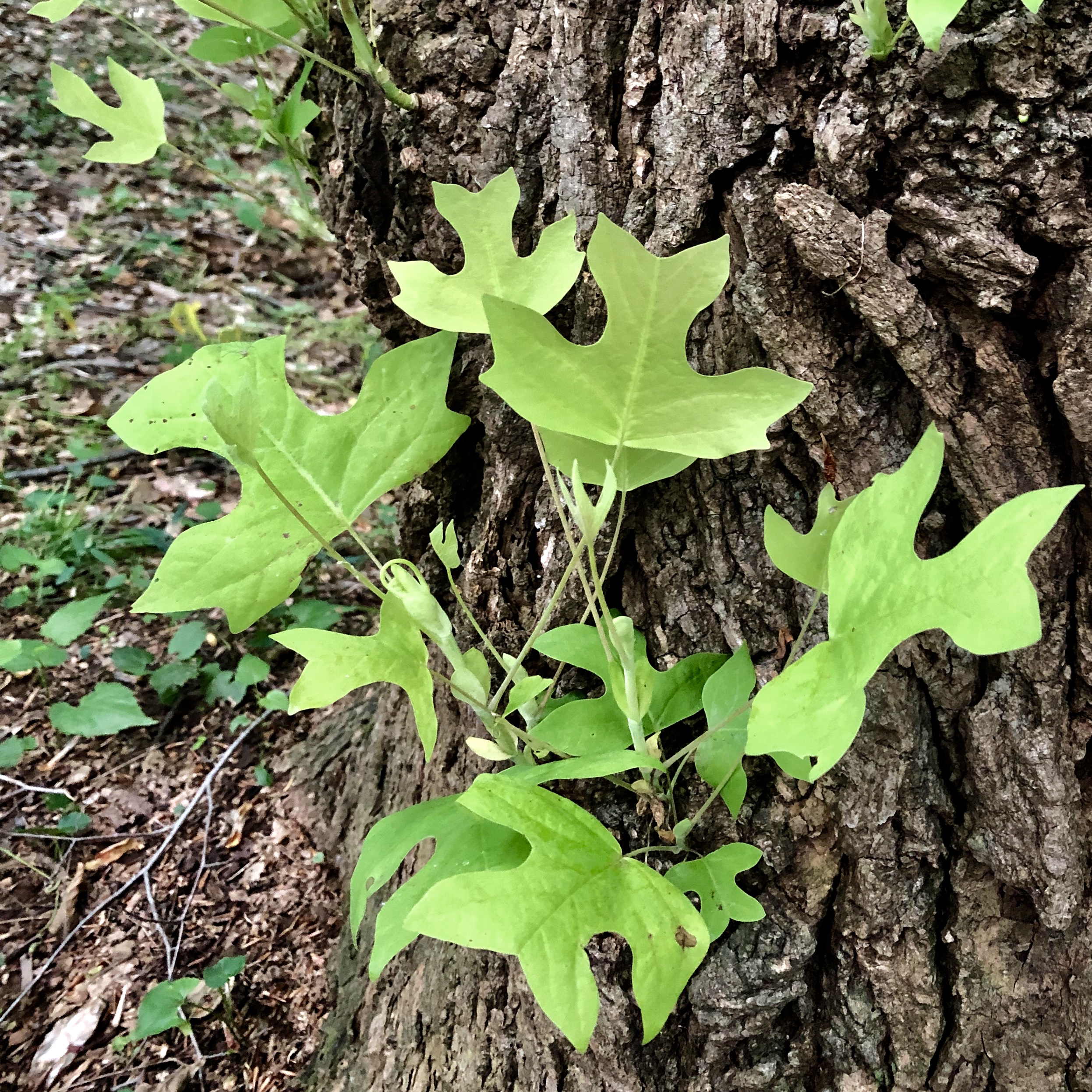
Medicinal Uses
The bark of the Tulip Poplar tree has been used for years. When boiled in water and made into a tea, it was used to treat typhoid, malaria, arthritis, intestinal issues, dysentery, and coughs. The bark contains a substance called tulipiferine which has powerful effects on the heart and nervous system. The tea can also be used as a poultice to treat burns, wounds, and boils. As with any use of wild plants, only forage if you are 100% confident in your skills and plant uses. This information is not to be used as a guide for any use of Tulip Poplar teas.
